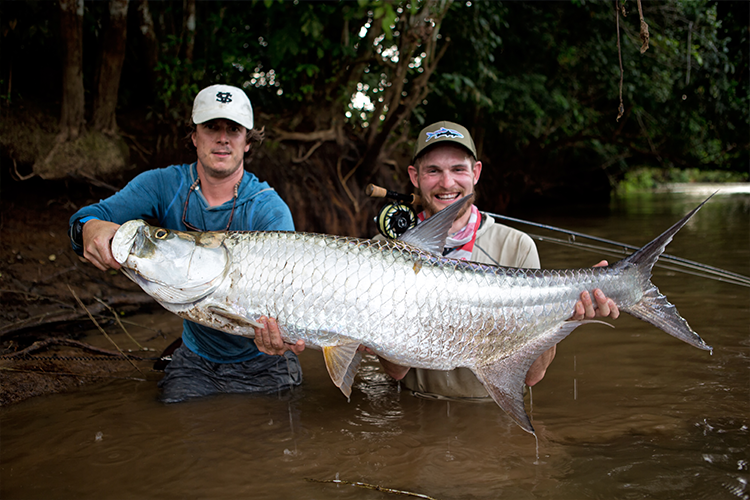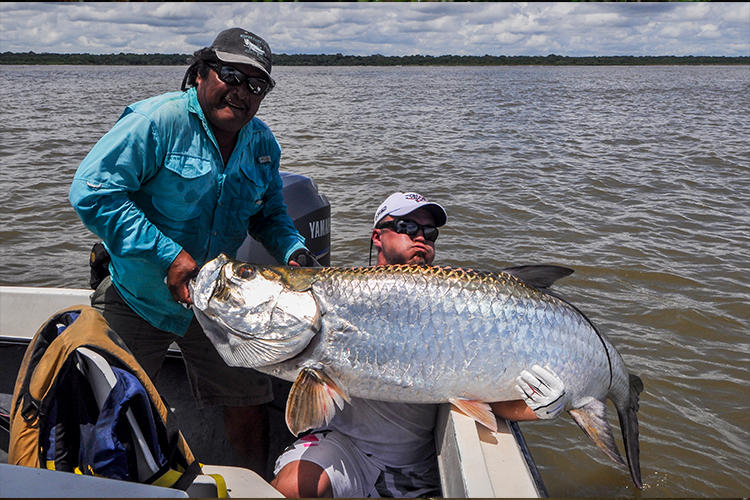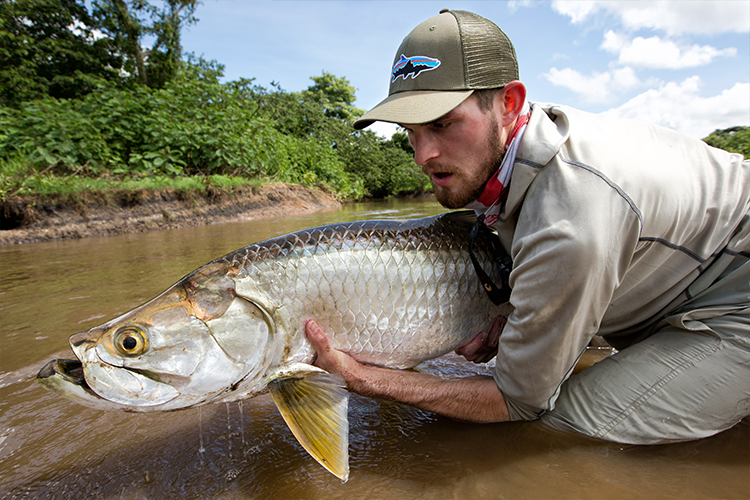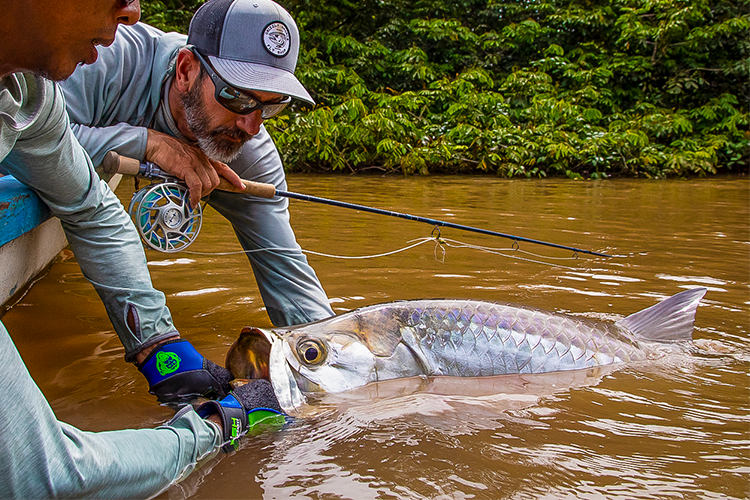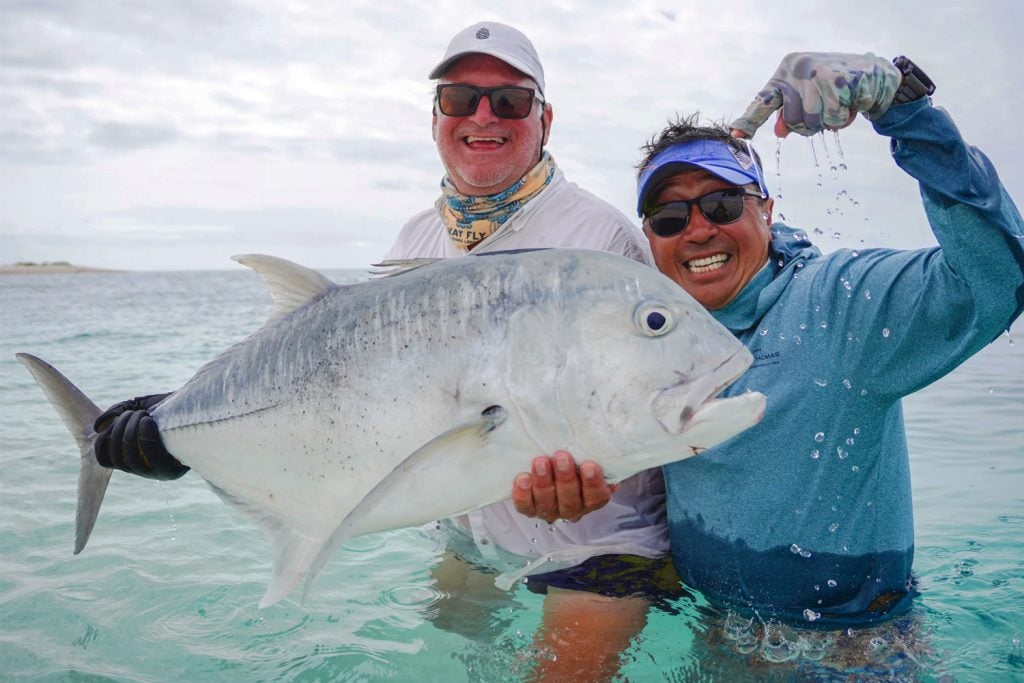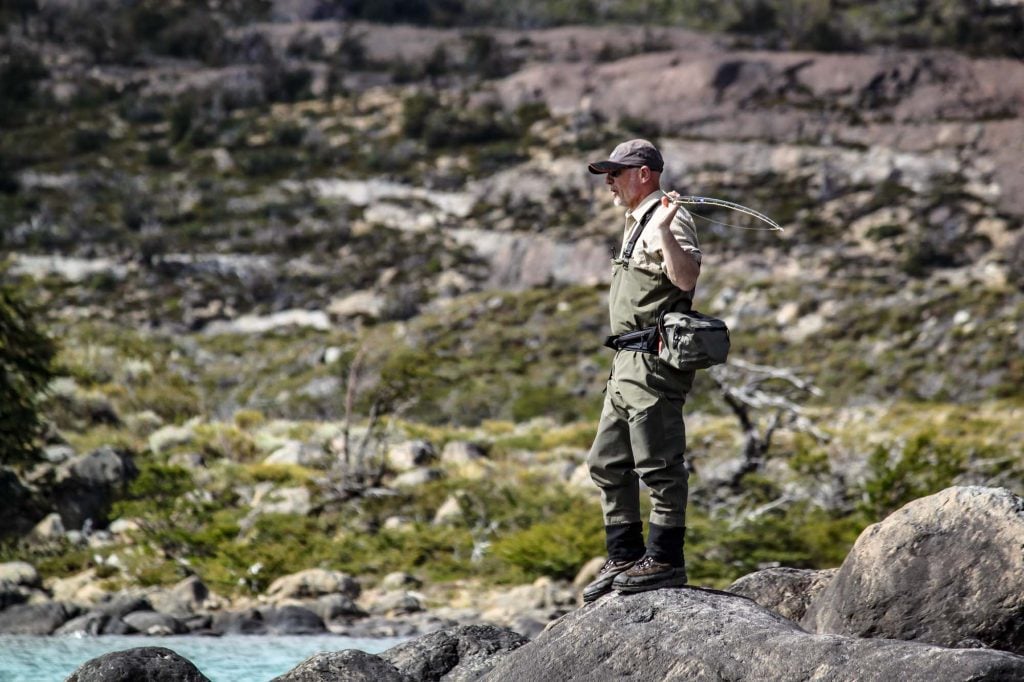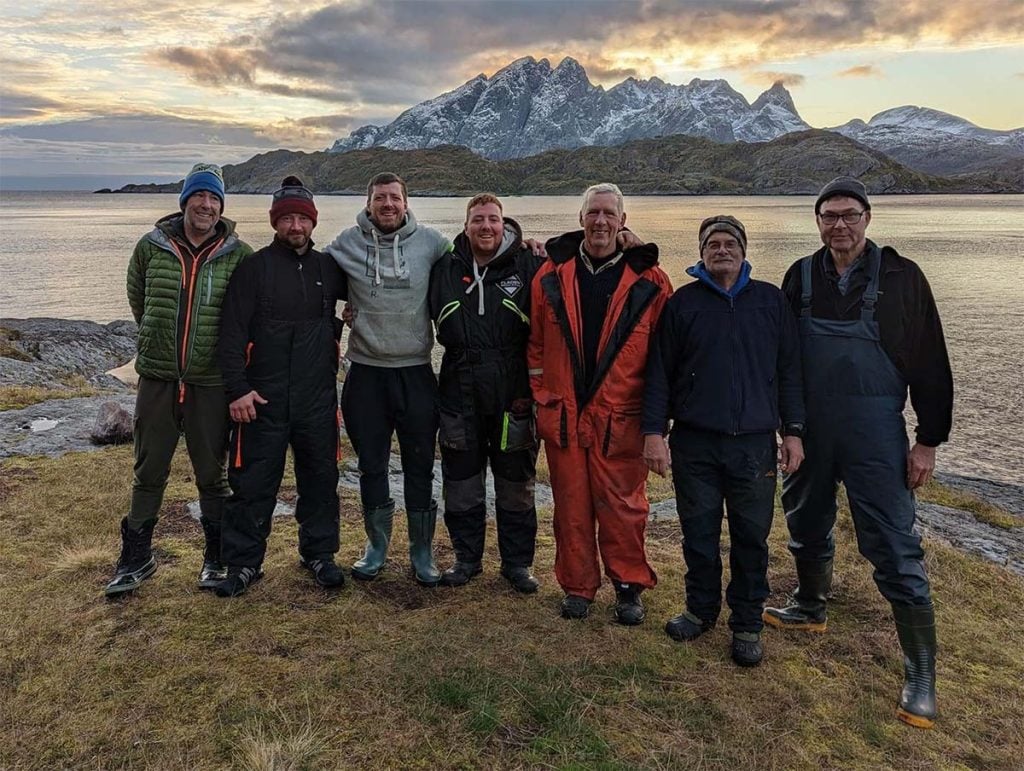Species: Tarpon
Also known as: Silver King, Sabalo
Latin Name: Megalops cyprinoides
TARPON Description
Because of their large size, legendary strength and stamina, magnificent beauty, and habit of jumping when hooked, the Tarpon is among the world’s most prized game fish. Tarpon are toothless and they swallow their prey whole. Adult Tarpon are four to eight feet long and weigh anything from 10lb to 280lb. They have slender bodies which are a silvery and shiny with blue-grey or greenish backs and dark fins and tail. A Tarpon’s mouth is large and upward, it is mostly hard, bony and rough like sandpaper that’s why it is always hard to set the hook and drive it home. Tarpon are also special because they are one of the few fish in the world that have a swim bladder which also acts as a lung so they can breathe raw air. They can still breathe like most fish breath through their gills. This is one reason it is thought that they can battle for so long, because of the amount of oxygen they are able to take in throughout the fight when they come up and gulp air.
Where to catch Tarpon
The Atlantic Tarpon is found throughout the Gulf of Mexico, on the coast of the western Atlantic Ocean from Brazil to Virginia, and on the west coast of Africa. Their range has extended to the eastern Atlantic, west coast of Panama, the west indies and Costa Rica, presumably via the Panama Canal. Tarpon populates a wide variety of habitats but are primarily found in coastal waters, bays, estuaries, and mangrove-lined lagoons within tropical, subtropical, and temperate.
Average TARPON Size
Tarpon starts off in the larval stage due to being a part of the family megalopidae. Once they reach 3-5 years of age, Tarpon can be found as juveniles in what is often called Tarpon Nurseries, these fish can be anything from 5lb to 40lb. These nurseries tend to be around mangrove canals and lagoons as these provide protection to the small fish from sharks which is the Tarpons number 1 predator. Once they reach about 40lb the Tarpon tends to move more to open water but still remain not too far from the origin. However, once these fish then reach sexual maturity they join migratory groups that travel many hundreds of miles following baitfish. During the breeding season, these large mature fish that can reach well over 200lb come back to the mangrove shorelines to breed.
Tarpon Fishing Methods
There are various methods of catching a Tarpon and also many places around the world that offer each or all these methods. It all comes down to how you like to fish. First, let’s look at bait fishing for Tarpon, this can be in the form of live bait and dead bait as Tarpon we also happily pick up a free meal of a dead fish lying on the bottom. When fishing with live bait it is either fished under a float and held out the back of the boat anywhere between 30 to 80 yards out. You can also troll with live baits again behind the boat. At certain times of the year, anglers can also use live crabs that again are just freelined behind the boat. One thing that will surprise you is just how gentle this species will take a live bait or Crab, many times the angler totally misses the bite.
Another method of catching Tarpon is lure fishing and jigging. This involves covering the water with both surface lures and also deep diving lures depending on what depths the Tarpon are. This can be a very effective method of fishing when you know Tarpon are in an area but you cannot site fish for them. This method is very popular in Costa Rica at lodges like Silver King Lodge as you cover the coloured water as it empties into the ocean.
Finally, the ultimate challenge is trying to catch and land these fish on the fly, considered by many saltwater anglers a real silver prize as they are really known for the difficulty in catching on the fly and their fighting capabilities. Fly fishing although you can fish with a sinking line and dredge areas that you know have Tarpon, but by far the most exciting method is sight fishing. This way you spend many hours looking for Tarpon on the shallower flats feeding. You then try to approach them without spooking the fish. Cast and strip, as its sight fishing you can see them chase down your fly sometimes right up to the edge of the boat. Makes for very exhilarating fishing and the perfect locations are in Mexico and Cuba along with some of our clean water fly fishing lodges in Costa Rica.
Contact Us
If you want to learn more about the best places to catch Tarpon and the methods to use, you can contact our dedicated team of professionals on 01603 407596 or by emailing peter@sportquestholidays.com and he will be happy to answer any questions you have. Looking for some more action? Why not take a look at our dedicated Tarpon playlist.
Tight lines,
Peter
